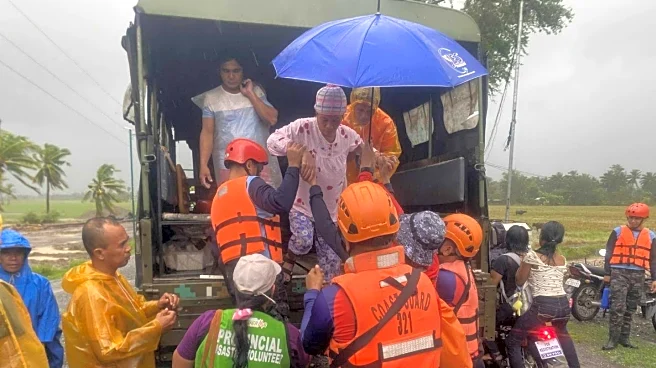What's Happening?
Typhoon Fung-wong has left the Philippines after causing significant destruction, including floods and landslides. The storm resulted in the deaths of eight people and displaced over 1.4 million residents.
Initially hitting as a super typhoon, Fung-wong weakened as it moved through northern provinces and agricultural areas. The typhoon is now forecasted to head towards Taiwan, raising concerns about further impacts.
Why It's Important?
The typhoon's impact on the Philippines highlights the country's vulnerability to natural disasters, with significant implications for public safety and infrastructure. The displacement of a large number of people underscores the urgent need for effective disaster management and international support. The storm's trajectory towards Taiwan poses additional risks, potentially affecting regional stability and economic activities.
What's Next?
As the typhoon approaches Taiwan, authorities are likely to implement precautionary measures to mitigate potential damage. The Philippines will focus on recovery efforts, including providing aid to displaced individuals and repairing damaged infrastructure. International assistance may play a crucial role in supporting these efforts, and discussions on enhancing disaster preparedness and resilience are expected to continue.
Beyond the Headlines
The frequent occurrence of typhoons in the region raises concerns about climate change and its impact on weather patterns. Ethical considerations in disaster response, such as equitable distribution of aid and long-term recovery strategies, are critical. The cultural resilience of affected communities will be tested as they rebuild and adapt to ongoing environmental challenges.












